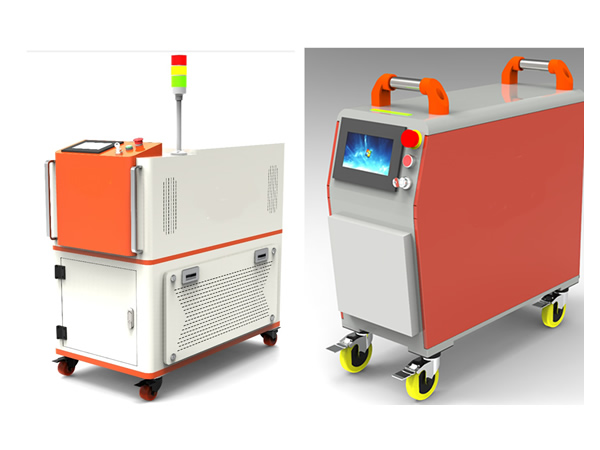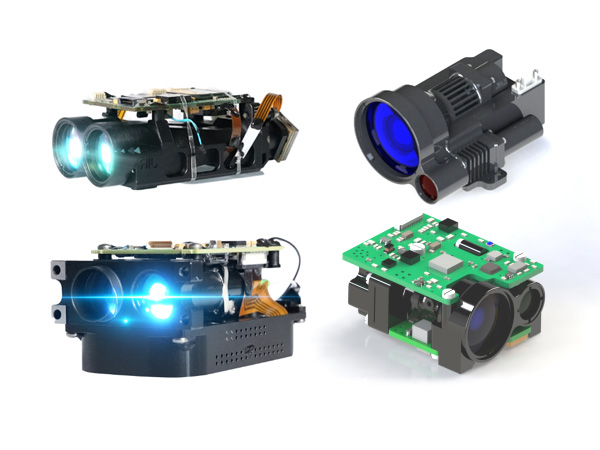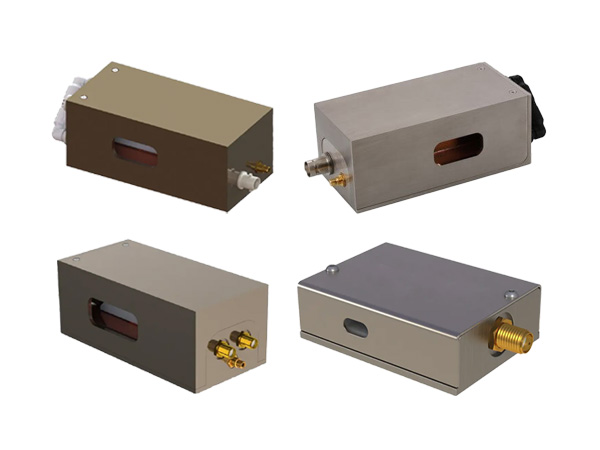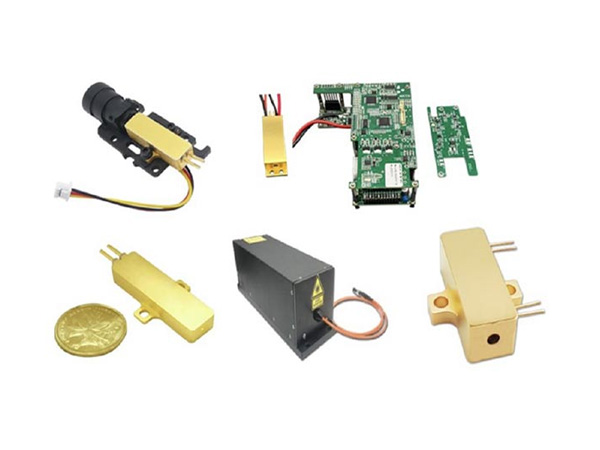Two-photon Quantum Interference and Entanglement at 2.1 μm
Shashi Prabhakar, Taylor Shields, Adetunmise C. Dada, Mehdi Ebrahim, Gregor G. Taylor, Dmitry Morozov, Kleanthis Erotokritou, Shigehito Miki, Masahiro Yabuno, Hirotaka Terai, Corin Gawith, Michael Kues, Lucia Caspani, Robert H. Hadfield and Matteo Clerici
Abstract
Quantum-enhanced optical systems operating within the 2- to 2.5-μm spectral region have the potential to revolutionize emerging applications in communications, sensing, and metrology. However, to date, sources of entangled photons have been realized mainly in the near-infrared 700- to 1550-nm spectral window. Here, using custom-designed lithium niobate crystals for spontaneous parametric down-conversion and tailored superconducting nanowire single-photon detectors, we demonstrate two-photon interference and polarization-entangled photon pairs at 2090 nm. These results open the 2- to 2.5-μm mid-infrared window for the development of optical quantum technologies such as quantum key distribution in next-generation mid-infrared fiber communication systems and future Earth-to-satellite communications.
INTRODUCTION
The ability to generate and detect quantum states of light underpins the development of secure communications, both for guided wave and free-space systems (1, 2). Free-space quantum key distribution (QKD) has recently enabled quantum-secured intercontinental communication between locations as far as 7600 km apart on Earth (3). Until now, satellite-based QKD has only been possible at night to avoid the blinding effect of the solar background radiation, but recent studies have shown that operating near 1.5 μm could—due to the reduction in solar background radiation (4)—alleviate this issue and enable daylight quantum communications. Moreover, lower scattering losses from subwavelength-sized particles (Rayleigh scattering) further support the use of infrared radiation for free-space communications. At 2.090 μm, the target of this work, the solar irradiance per unit area outside the atmosphere and in a 50-nm bandwidth, is three times lower than the same quantity at 1.5 μm (5), making a compelling case for investigating sources and detectors of nonclassical light fields at longer wavelengths (6).
A further reason to investigate entangled photons at ~2 μm comes from the limitations of guided wave optics (7, 8). The current fiber network faces a “capacity crunch” (9), unless a step change in technology is achieved. Solutions such as novel hollow-core photonic bandgap fibers working at 2 μm with reduced optical nonlinearities and lower losses (10–13) are currently under test for network implementation. Furthermore, integrated photonics is also seeking to expand into the 2-μm region due to the reduced linear and nonlinear losses that are expected for the well-established silicon platform (14, 15). For example, silicon-germanium waveguides have been recently shown to enable communication speeds up to 10 gigabytes/s (16) over a propagation length of nearly a centimeter. In addition, as is the case for free-space communications, the guided wave infrastructure is also bound to adopt a layer of security, and thus, QKD at 2 μm will be required for these new integrated technologies (15).
An additional reason to investigate the generation and detection of nonclassical states of light at 2 μm comes both from sensing (17) and from the emerging field of high-sensitivity metrology and specifically for gravitational wave detection. To extend the reach of the Laser Interferometer Gravitational-Wave Observatory (LIGO) interferometer beyond our galaxy, the LIGO-Voyager upgrade sets an operating wavelength of ~2 μm (18). This is due to the λ−2 dependence of the scattering from crystalline silicon, which is to be used as a new cryogenically cooled test mass material, and also due to the improvement of optical coatings with amorphous silicon at these wavelengths (19). To improve sensitivity, nonclassical squeezed states of light will be injected in the interferometer. The first step toward a 2-μm “squeezer” for LIGO Voyager was recently shown (18).
RESULTS
In this work, we show the first generation and characterization of indistinguishable photon pairs and polarization entanglement at 2.1 μm. Degenerate photon pairs are produced via spontaneous parametric down-conversion (SPDC) in a second-order nonlinear crystal. One photon from the pump laser is converted through vacuum noise amplification into two correlated photons at half the energy of the excitation field. To drive this nonlinear process, we used a turn-key compact ytterbium-based ultrashort-pulse fiber laser (Chromacity Ltd.), emitting a train of pulses with an average power of up to 2.5 W, a repetition rate of 80 MHz, a pulse duration of ~127 fs, and a carrier wavelength of ~1.045 μm. The first test was performed to quantify the generation efficiency of SPDC in a type 0 phase-matched configuration. In this process, the polarization of the excitation field and the generated daughter photons are the same. To this end, we used a 1-mm-long periodically poled, magnesium-doped lithium niobate crystal (MgO-PPLN; Covesion Ltd.). The crystal length was chosen to guarantee maximum conversion efficiency and minimal temporal separation between the pump pulse and the generated SPDC field. The crystal has been poled with the ferroelectric domains periodically inverted to assure coherence between the pump field and the generated photon-pair phase via quasi-phase matching (20) for the whole length of the crystal and over a broad bandwidth. Different poling periods were tested to determine the optimal condition, and the experiments reported here were obtained using a poling period of 30.8 μm and a stable temperature of (30 ± 0.1)°C. We first characterized the source in the high-photon flux regime, using an amplified InGaAs photodiode and phase-locked detection to determine the SPDC efficiency and losses in the system (see Materials and Methods). A 50-nm bandpass filter was used to select the portion of the down-converted field in the degenerate 2090-nm spectral region. Additional filters, such as long-pass (~1.85-μm edge) antireflection-coated germanium windows, were used to reject the intense laser excitation field. The conversion efficiency increases nonlinearly with increasing excitation power, as shown in Fig. 1. The fit to the data follows the standard equation expressing the down-converted power (PSPDC) as a function of the pump power, in the phase-matched case, PSPDC=α sinh2(γPp−−√) (21), where α is the loss coefficient, γ is proportional to the product of the nonlinear coefficient and crystal length, and Pp is the pump power. This way, we can extract the efficiency η = PSPDC/Pp = (3.0 ± 0.2) 10−11 at a photon generation rate of ≃0.04 ≪ 1 pair per laser pulse (photon-starved regime) for 10 mW of excitation power. The efficiency at low power is η≃α γ2+13αγ4Pp, resulting in the expected constant efficiency of SPDC (first term) in this photon-pair generation regime. Such a low rate is essential to avoid the generation of multiple photon pairs per laser pulse, which pose a risk for quantum-secured communication protocols and saturation of the single-photon detectors used to measure the properties of the SPDC radiation. Notably, the driving laser power is enough to generate a bright squeezed vacuum state with >10 photons per pulse (Fig. 1B). We measured a photon purity of 1.8 ± 0.1 modes with a 50-nm bandwidth filter. Single-mode selection is achieved with a 10-nm bandpass filter (see “Characterization of MgO-PPLN crystal efficiency” section in Materials and Methods).
For full article, please click here. For more information on the products, please click here.
 English
English Français
Français Deutsch
Deutsch euskara
euskara Русский язык
Русский язык Italiano
Italiano Português
Português Nederlands
Nederlands Polski
Polski Greek
Greek Lietuva
Lietuva Türkçe
Türkçe 日本語
日本語 한어
한어 中文
中文 தாமில்
தாமில் فارسی
فارسی हिंदी
हिंदी Tiếng Việt
Tiếng Việt ภาษาไทย
ภาษาไทย Pilipino
Pilipino Indonesia
Indonesia தாமில்
தாமில்





